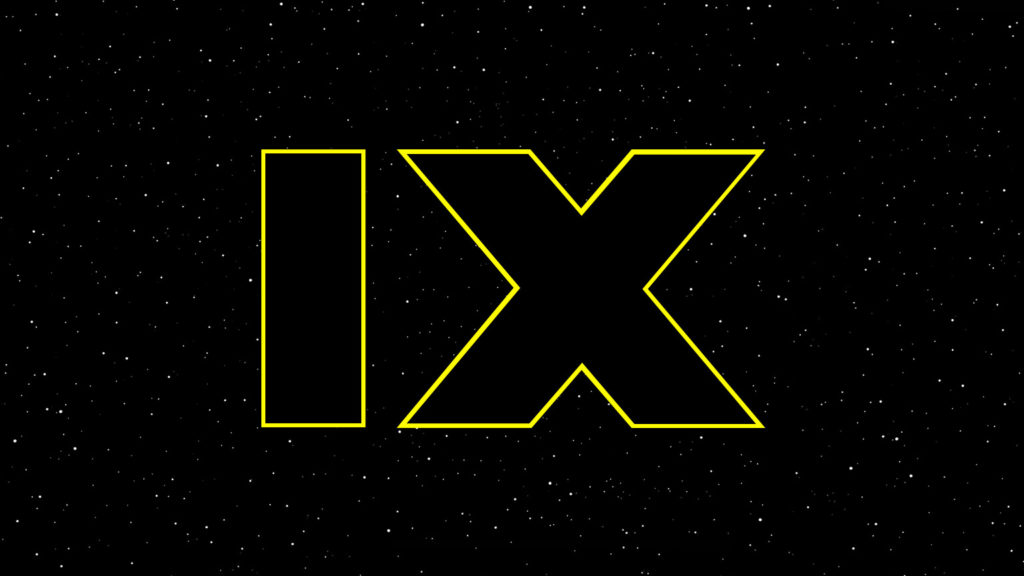There has been a lot of Star Wars news lately— much of which may have flown under the radar, but may give us a glimpse as to the future of the galaxy far, far, away. First, Bob Iger announced that they would be slowing down the release of Star Wars films after taking the blame for the underwhelming performance of Solo: A Star Wars Story. Then, it was announced that legendary producer Kathleen Kennedy has signed on for another three years as the head of Lucasfilm, signaling that Iger is pleased with the direction of the franchise and is not seeking to make drastic changes into how Star Wars is made from a creative standpoint. If we piece these two things together, it paints an interesting picture.
 With Iger taking the blame for the timing of Solo, it reveals that the release was not accidental or untimely. In fact, Iger was very proud that they would be releasing two Star Wars films in the same Fiscal Year (which runs from October through September). Having released three Marvel films in the 2018 Fiscal Year, it is not unreasonable to see if Star Wars could increase their output. However, Disney learned that Star Wars is not Marvel, and it appeared that the general public wants some space between releases. You can’t blame them for trying. Afterall, Lucasfilm has a fair amount of overhead with their San Francisco compound filled with a team far larger than Marvel Studios.
With Iger taking the blame for the timing of Solo, it reveals that the release was not accidental or untimely. In fact, Iger was very proud that they would be releasing two Star Wars films in the same Fiscal Year (which runs from October through September). Having released three Marvel films in the 2018 Fiscal Year, it is not unreasonable to see if Star Wars could increase their output. However, Disney learned that Star Wars is not Marvel, and it appeared that the general public wants some space between releases. You can’t blame them for trying. Afterall, Lucasfilm has a fair amount of overhead with their San Francisco compound filled with a team far larger than Marvel Studios.
Now, some of that overhead gets paid by other studios and other Disney films thanks to the technical wizards of ILM. According to their website, they are currently working on Aquaman, Bumblebee, and Captain Marvel. The fees paid by these films helps keep the lights on when their Star Wars workload is reduced. That is good as, for the first time in a while, there is only one Star Wars film in production: Episode IX. But what does it mean for the future of the franchise that they only have one film to work on?
We know of the Rian Johnson trilogy as well as the series of films by Game of Thrones’ David Benioff and D. B. Weiss. We have not received many details of what these films will entail. Part of this is probably by design as a way to give the franchise a breather, but it is implied that these films are not close to starting filming. So what will all those people in the Presidio be working on? Well, in addition to Episode IX, Lucasfilm is turning to the medium that kept the lights on after the release of Revenge of the Sith: television. That is, if you consider streaming to be television.
Jon Favreau’s live-action Star Wars series is reporting ramping up and is expected to be one of several live-action series that may be greenlit. Since the live-action series will reportedly have a budget north of $100 million, it is essentially the same scope as a Star Wars movie. While Disney may not be able to release as many Star Wars films as they wished, streaming will play a key component of Lucasfilm’s future. In addition, the high-budget resurrected Star Wars: The Clone Wars will be keeping Lucasfilm Animation busy.
So will these shows contribute to reported franchise fatigue? Presumably the folks at Disney believe the public will understand the difference between streaming and theatrical films — this despite Netflix’s continued efforts to blur that line. Disney has long maintained their commitment to the theatrical experience for “big” movies and, of course, they have major financial reasons for this. That being said, the streaming service will be the key to Lucasfilm’s continued financial strength. Can the yet-to-be-launched service afford large-scale series? Obviously, Disney is pleased that their ESPN+ service has over one million subscribers in five months. They see this as proof that they can convert fans to subscribers and increased their excitement for the Disney branded service which will launch in late 2019.
Comparisons to Netflix are inevitable, but there are some very important differences. While Netflix is spending $8 billion a year on original programming, this is spread over a myriad of projects. Disney will spend less but on much fewer projects. This allows them to invest in branded large-scope shows that mirror their theatrical release strategy. They want several of their offerings, such as their reported Marvel projects, to be destination entertainment. Lower price, fewer offerings, and with branded entertainment is Disney’s plan. If Netflix is Walmart filled with clutter, the Disney service will be the specialized retailer who can deliver fewer items, but give you more of what you want.
Keeping Kathleen Kennedy in the fold shows that Iger continues to be on board with her vision of Star Wars on the streaming service. Since Star Wars theatrical future is a bit up-in-the-air—as admitted by Iger—a lot is riding of Disney’s streaming service and Favreau’s series. Though you could say that all of Disney (outside of the parks) is riding on the streaming service since Disney is putting so much investment into their direct-to-consumer offering.
There are other Star Wars projects in the works such as Galaxy’s Edge, Disney Channel’s Star Wars: Resistance, and various licensing initiatives. But outside of the reported end of the Skywalker Saga in Episode IX, the bulk of the work is being made to beam directly into your home. And if you actually believe this is the end of the Skywalker Saga, you probably also believe all the Avengers that disappeared in Thanos’s snap are gone for good. We may be getting a break, but expect them to return when the franchise needs another revival.


